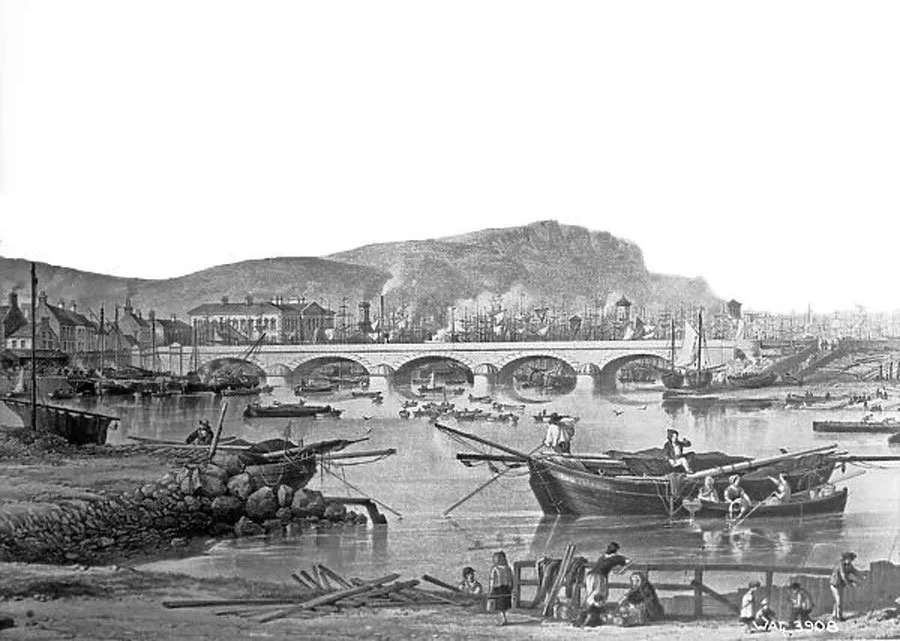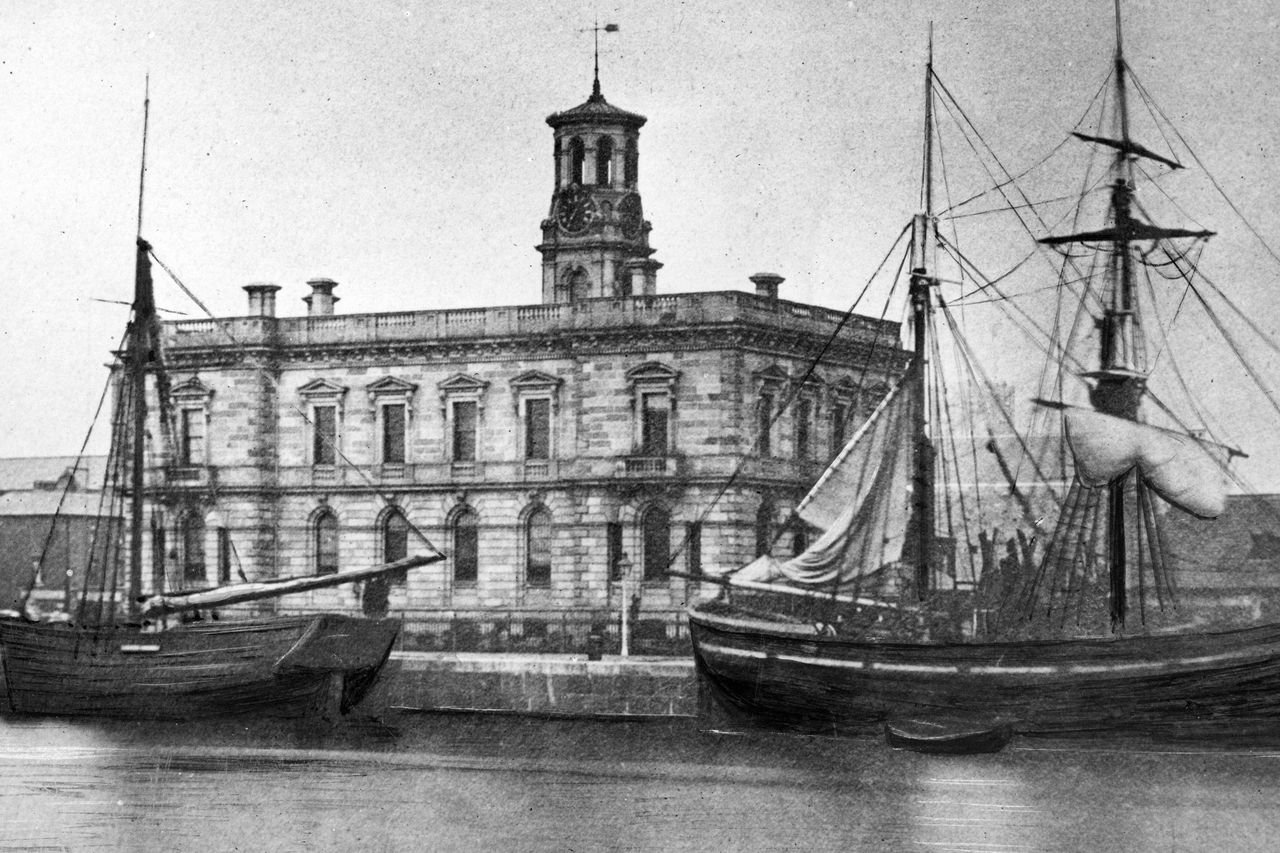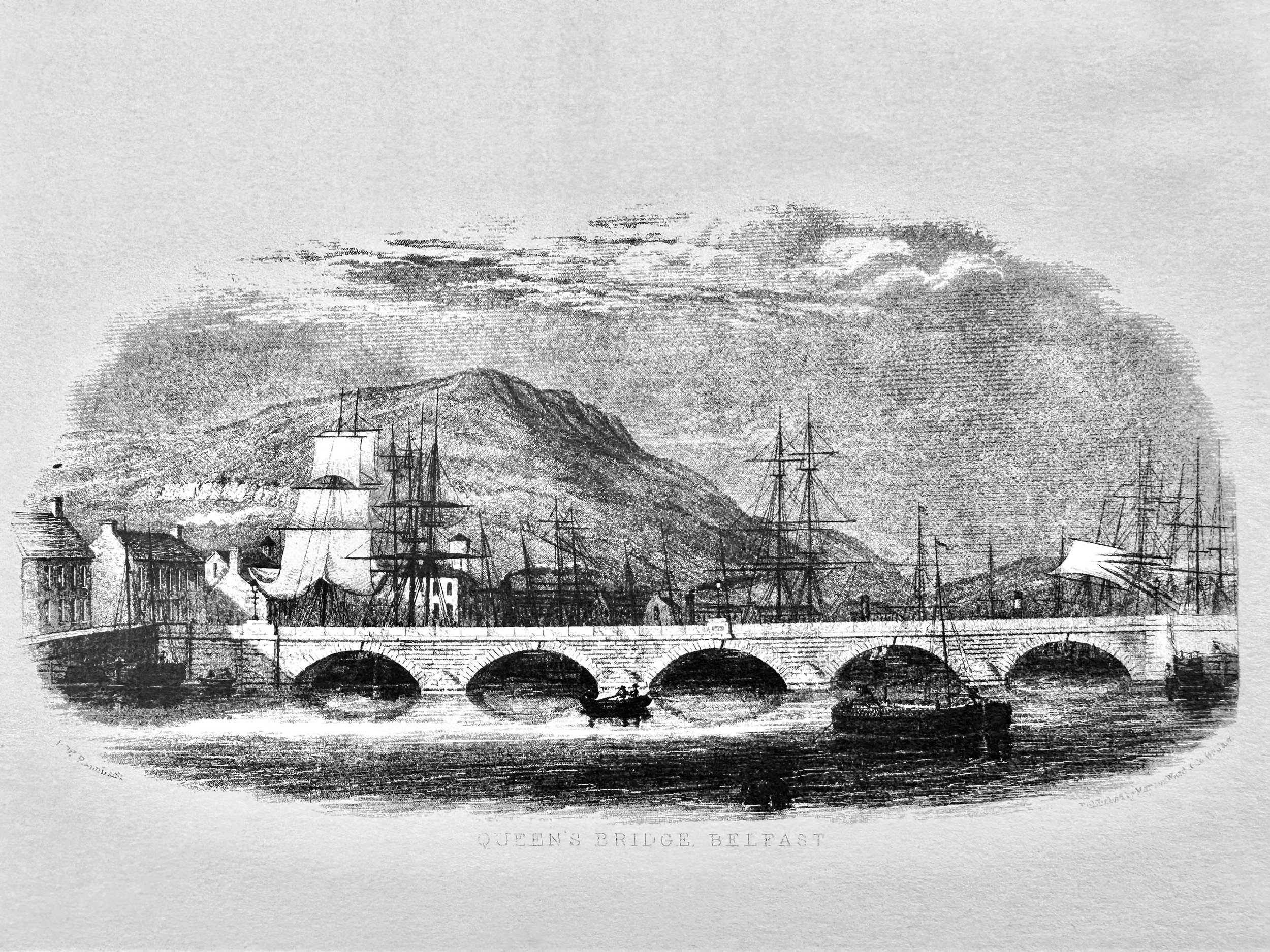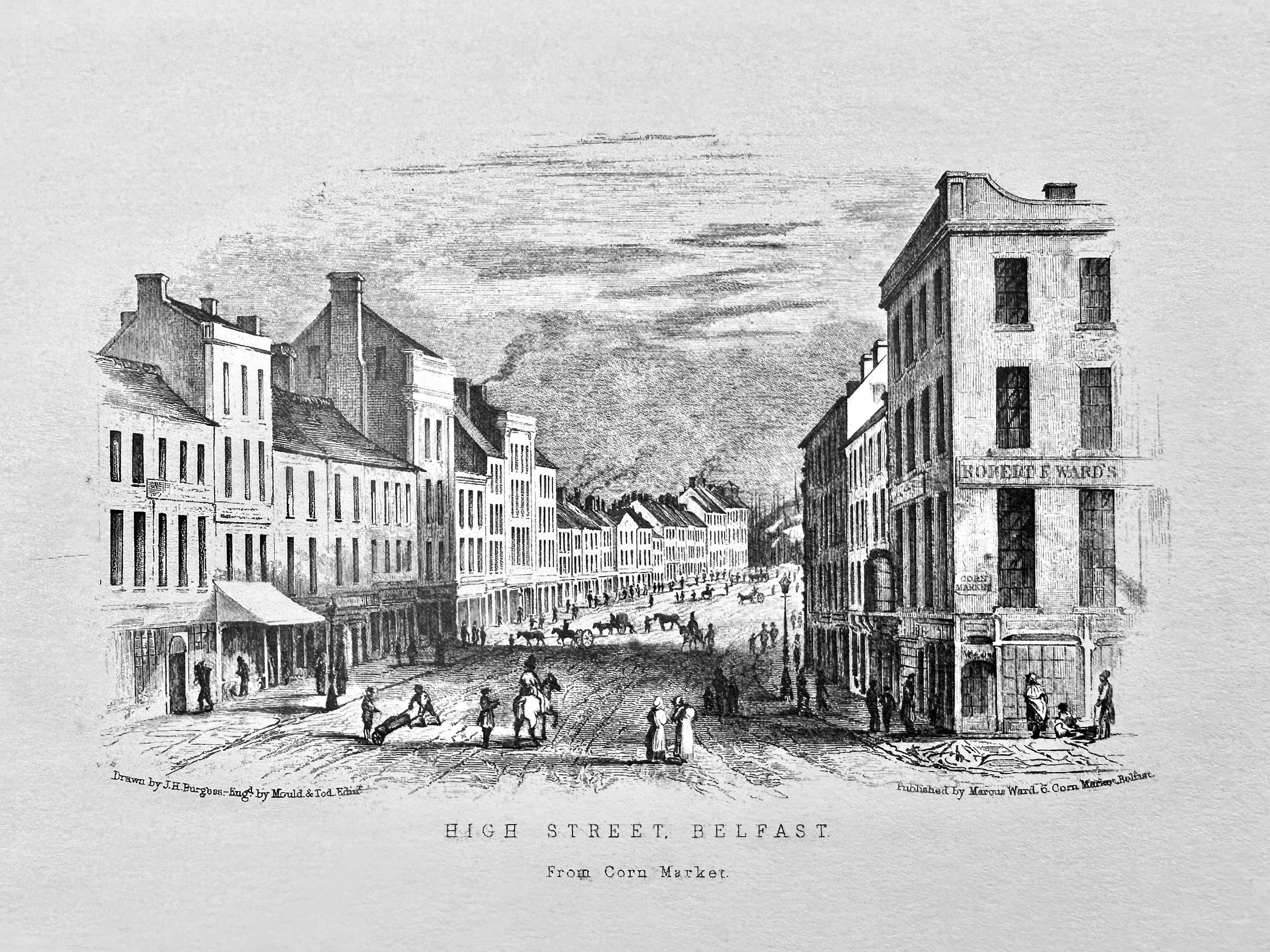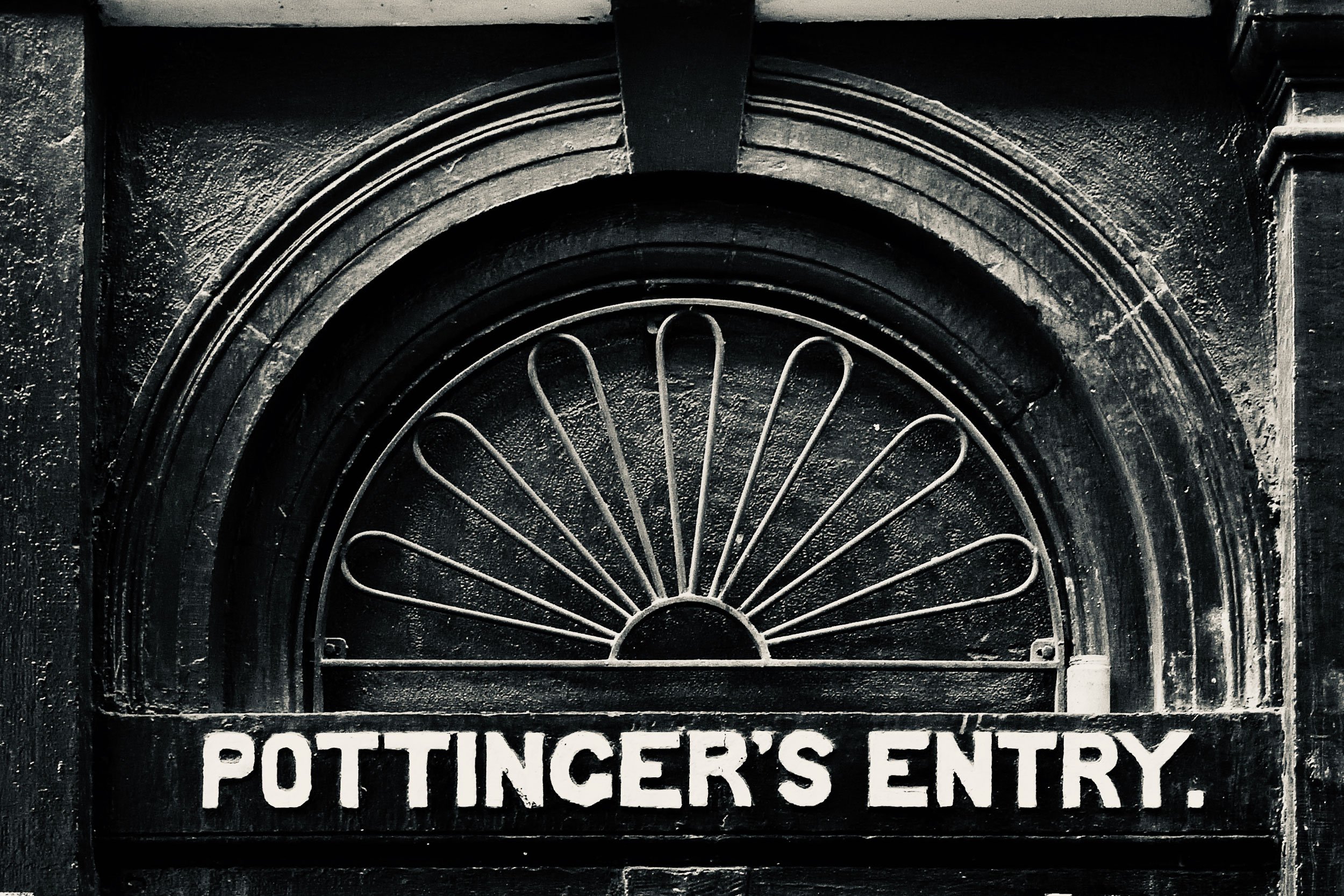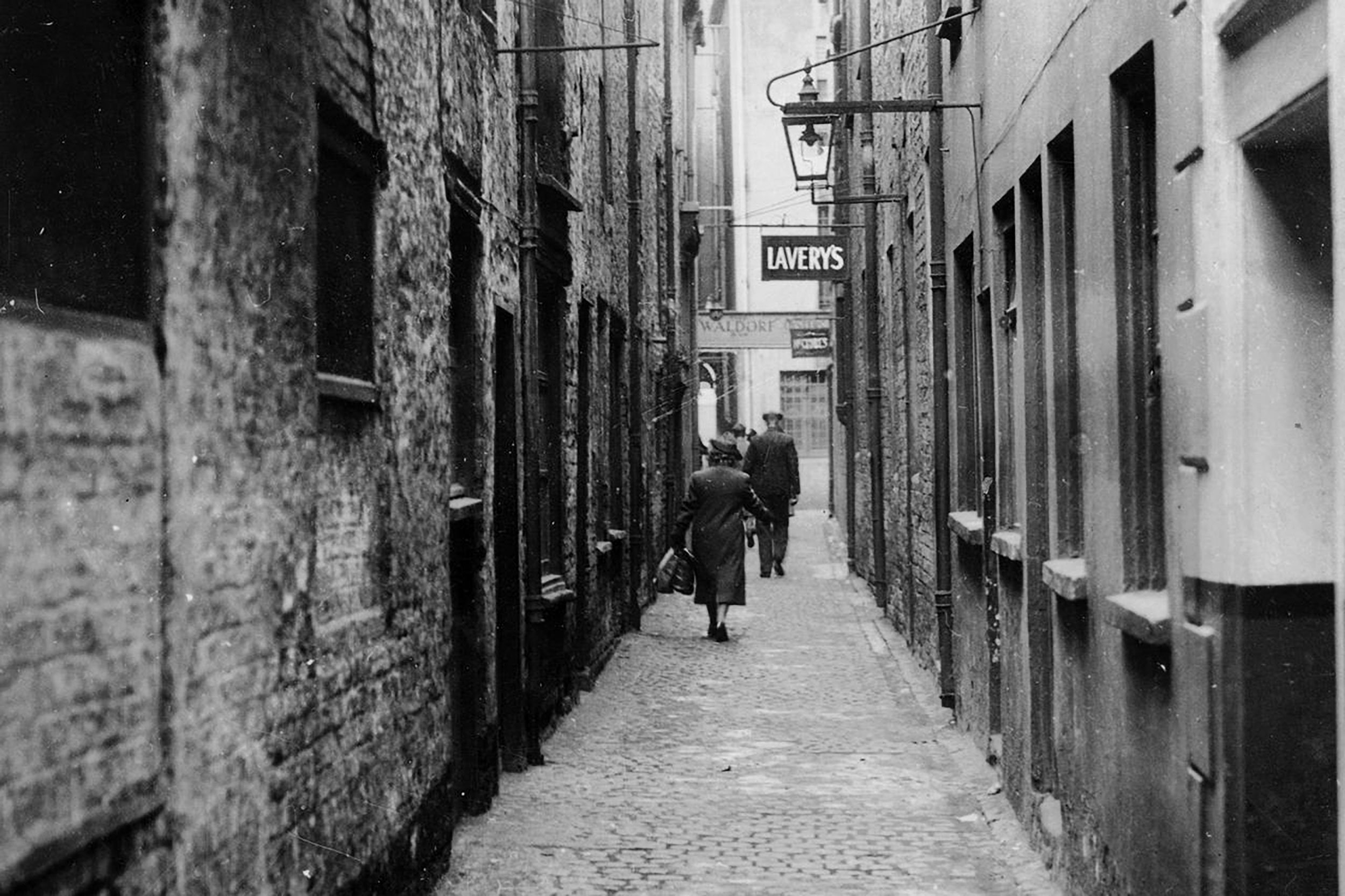The History of No. 33
Our Heritage • Ann Street
Ann Street (1946) facing Arthur Square with the Royal Cinema at left and Mooney's Bar at right.
Fish City is located on Ann Street, one of Belfast's oldest thoroughfares and today a bustling pedestrianised city centre street. With a rich history tied to Belfast's earliest days as a riverside village, Ann Street in the eighteenth century was a residential street of tradesmen and merchants connecting Cornmarket to the banks of the River Lagan, which flows out into the mudflats and lagoons of Belfast Lough.
Drawing of Old Belfast, a view of Queens bridge with boats and people in the foreground, circa early 1900s © National Museums NI / Mary Evans
“Belfast Lough forms one of the safest and most commodious havens in the world, the entrance being in breadth about five English miles, and the length about 12, gradually narrowing as it approaches the bridge.”
Belfast Harbour, the old Harbour Office photographed from the Clarendon Dock (c. 1890). Belfast Telegraph Archive
One of the oldest streets in Belfast
The area having originally been part of the village's waterfront when the River Farset was exposed, Ann Street, named after one of the Anne's of the Donegall family, was home to many of Belfast’s timber merchants. The tide was allowed to fill nearby Poultry Square each day, which the timber merchants used to store floating logs, with slips installed to reach the logs. When spring tides would flood the area, the residents of Ann Street and the nearby streets and entries got around by boat. Nearby street names such as Bridge Street and Skipper Street allude to the network of inland waterways that formed the arteries of a maritime city.
By Victoria's reign, Belfast had grown from a fortified town into a hub of industry and commerce. Belfast’s waterways provided power for the linen mills that fueled the Industrial Revolution in Britain, whilst the Lagan estuary gave the Victorian city further advantages including access to the sea and the space for shipbuilding. The White Linen Hall, a globally important international linen exchange, was selected as the site for a grand, new city hall. Ann Street in this time housed a wider range of shops and trade: chandlers, cobblers, haberdashers, milliners, tailors, leather manufacturers and tinsmiths, with them and their families living in the floors above their shops.
“There was but little space between the river and dwellings of Mr Waterson at the corner of Ann Street, Mr Shea, Mr Eikenhead and Captain Skinner.”
No. 33
Grocers to Umbrella Emporium
The building at No. 33 was built in the mid- 19th century. In 1852, it was the shop of William Henry Milligan, a grocer, tobacconist, and snuff manufacturer. In 1880, it was the premises of wholesale grocers John Woods & Co. In 1907, trunk, bag and portmanteau manufacturers Erskine & Sons Ltd. occupied the building. In 1960, the premise was part of Johnston's Umbrella Emporium and Manufactory, a world-renowned manufacturer of walking sticks and umbrellas. Johnston’s Umbrella Emporium held a royal warrant and displayed the royal arms outside their shop at Blackthorn House at 31 High Street, where Belfast Exposed Bank Gallery sits today.
The Belfast Entries
Our restaurant sits opposite Pottinger's Entry, one of several narrow cobbled alleyways that formed the nucleus of a growing merchant city. Throughout the 18th and 19th centuries, the entries were known for printing, manufacturing, and hostelries. Named after a successful Scottish mercantile family and first recorded on maps in 1715, Pottinger's Entry, like neighbouring Joy's Entry, Wilson's Court, and Crown Entry, joined Ann Street with High Street on the banks of the River Farset. Small ships could sail and moor to the foot of High Street to unload their cargoes on the quayside. Today, the Farset, the river that gave Belfast its name, flows quietly beneath High Street, just down the Entry from our door.
Wilson’s Court between High Street and Ann Street (1941). A narrow alley with Lavery’s, Belfast's oldest family-owned pub. Belfast Telegraph Collection/NMNI
Respecting our heritage
We are passionate about protecting and preserving the unique culture and cultural heritage of Belfast, from our buildings to our stories. Looking to learn more? Check out award-winning Belfast walking tours with expert local guides with a few recommendations here:
DC Tours Belfast Walking Tours
The best way to get to know a city is on a walking tour. Join DC Tours’ award-winning local tour guides and discover Belfast’s fascinating history with the experts with a range of fascinating tours to embark on.Heads Up Architectural Tour
Belfast Walking Tours operates a number of tours, with its ‘Heads Up’ Architectural Tour showcasing Belfast’s heritage through its buildings. Step into another era, see true craftsmanship, and discover Belfast’s incredible story through its architecture.Document Belfast
Check out Document Belfast’s Instagram page for a well-curated series of engaging videos telling the many stories about Belfast’s historical sites. You can view more content on their YouTube page and book them for your very own historic walking tour.
References:
Belfast Telegraph (22 January 2014). 'The Industrial Revolution transformed Belfast, making it Ireland’s biggest city – and it all began with the port.'
Lennon Wylie. '1824 Pigot's Directory, Belfast Section.' Transcription of Pigot & Co's Provincial Directory of Ireland 1824 - Ulster.
P&P (22 December 2021). ‘Ann Street, Belfast – The Early Days.’ Belfast Entries.
Timothy William Ferres (9 July 2022). ‘Ann Street, Belfast.’ Lord Belmont in Northern Ireland.
